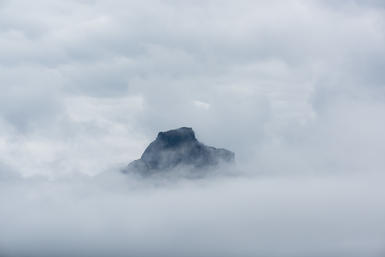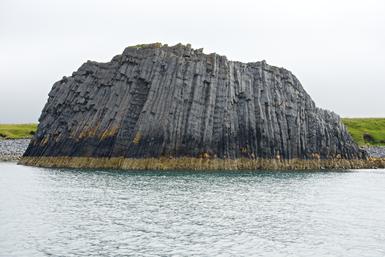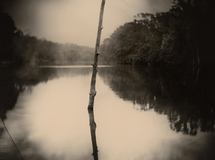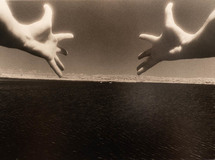Finding Your Bliss 3
In Finding Your Bliss (here) and Finding Your Bliss 2 (here) I wrote about a Sally Mann photograph and compared it to this image I made in 1976, not in content but in intent.
As I work to conclude this series let me please pause and thank Sally Mann for starting this extended conversation. Her photograph pushed me to go back in my own work and dredge up the two swans photograph and remember what it meant then and what it means now.

But what happened to my work after I had this big moment, this realization that with my photography I now had a deeper understanding of inherent possibilities, paths, and directions? Did I go back to the family picnic that afternoon and announce my discovery? Did my family and friends have any clue that I had gone deeper and seen farther into my life's work as an artist. Nope, nor did it come out later. This was my discovery, my "ah-ha" moment. I felt somehow that this experience was not relatable or at least that I couldn't share the power of the realization effectively, or, at worst, that they wouldn't care.
I would say that, while I didn't go on to become a "hands or body parts in the picture" photographer I was better informed to the inherent possibilities and depth that my pictures could address, that I was playing to a higher level in my work after that day. In short, by making this personal discovery, the bar had been raised on my own work throughout the rest of my career.
As an addendum,
let me answer the question you might be asking. Was that infrared photograph of my hands in a picture made of two swans on the edge of a pond in Martha's Vineyard in 1976 something that led me to more "hand's in" pictures? Did I continue or utilize this process in other work as I went through my career? Mostly no, with occasional exceptions. Examples:




These are from my first trip to Iceland in 2013. I was an artist in residence at the Baer Art Centre in Hofsos. The pictures are of The Cape, a locally famous huge piece of rock near where we lived that summer. Same thing, feeling a strong connection, I found my hand(s) sliding into the picture. An affirmation perhaps that I was there and interacting with the air and place in a short slice of time. Not conscious so much as felt or intuited perhaps.
I was not the first person to move my hands or other body parts into the frame of my photographs in 1976. Self portraiture was common and I made some of those too. But was I making a sort of "selfie" back then? I don't believe so, for a selfie connotes a desire to show yourself in a place, in front of the Golden Gate Bridge, the Grand Canyon, the Taj Mahal as a proof mechanism that you were there. Not my interest at all. For mine was to interact with the place, as an immersion into the place.
Let me leave you with the following. As photographers we must deal with the mechanics of our medium (although even that is changing). Also, as someone who makes his own prints I must bring a whole other set of skills to bear. But if well schooled, all of this fades to the far background to allow a skillful and meaningful image to surface. This also allows us to share our feelings and perceptions with others, to point a direction, to observe something amazing or awful or never seen before or even to draw attention to something others walk right by on their way to work. This most incredible tool we have, photography, which has gotten so good in the last few years, is our best observational device ever to look at ourselves and the world we inhabit. And, occasionally but rarely in my work, to interact too.
 Mt Auburn Cemetery, Cambridge,MA 1978
Mt Auburn Cemetery, Cambridge,MA 1978
This finishes the "Find Your Bliss" series of posts begun earlier this month. As always, thanks for reading my short essays. Comments are welcome: here.




